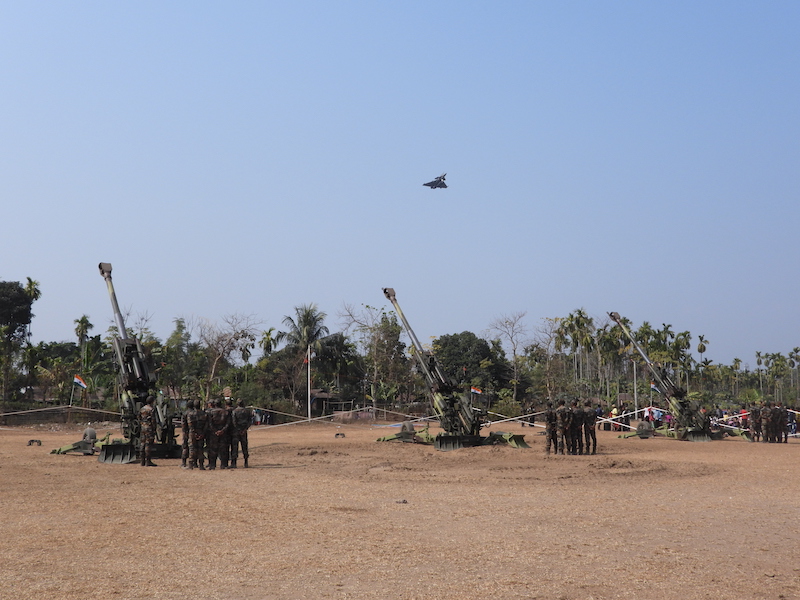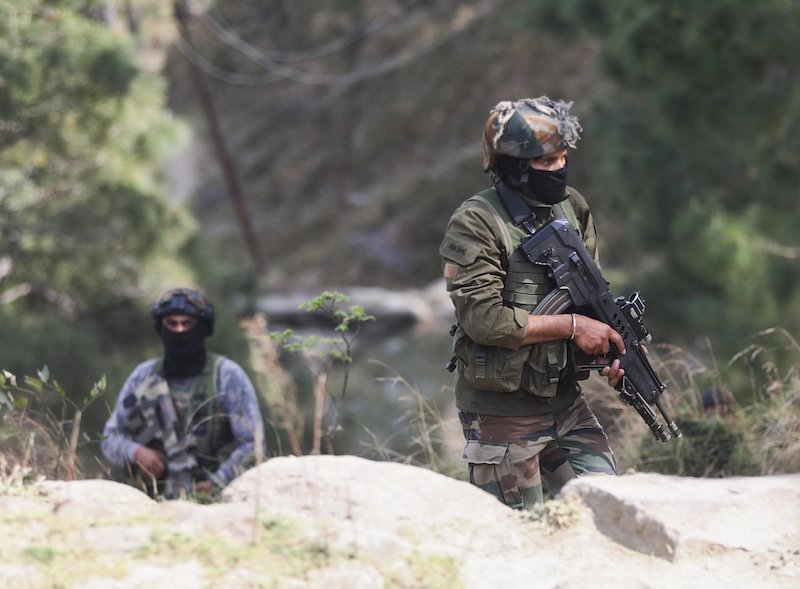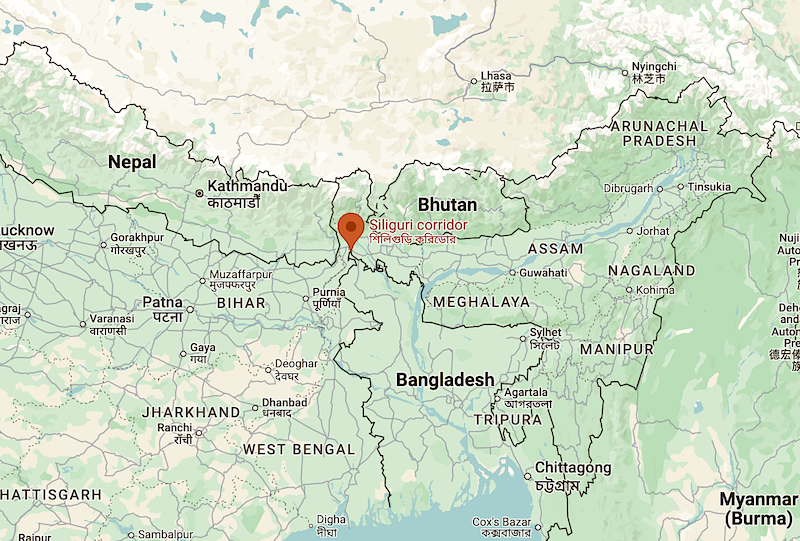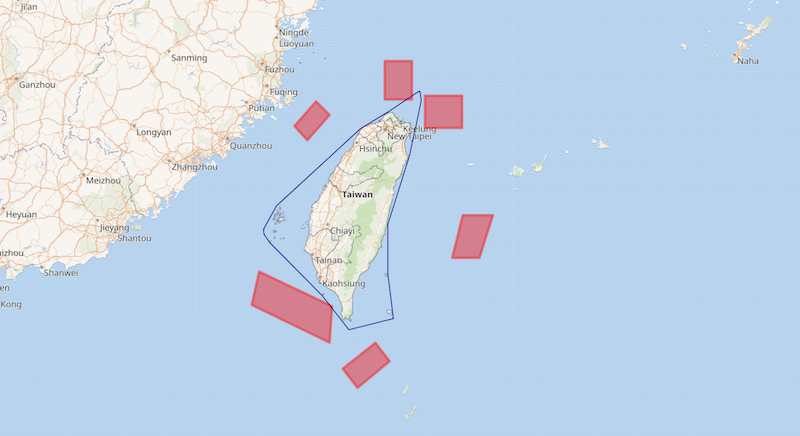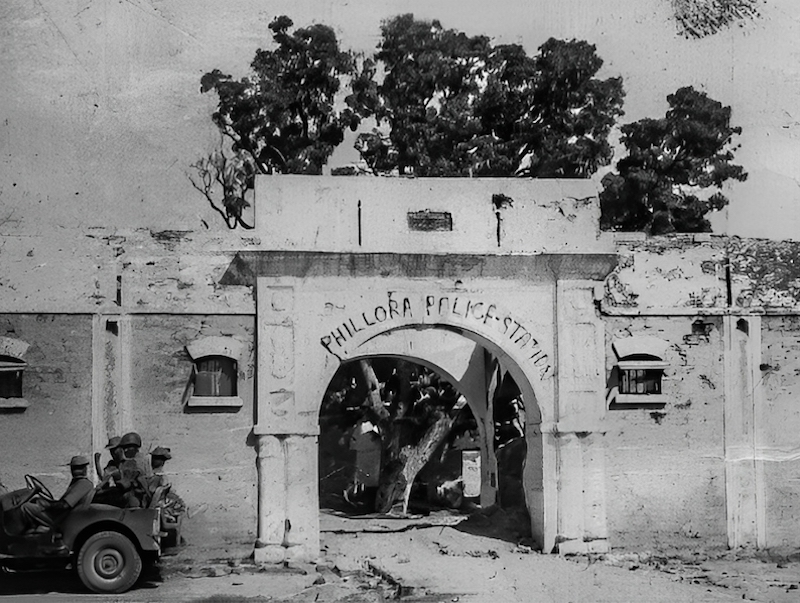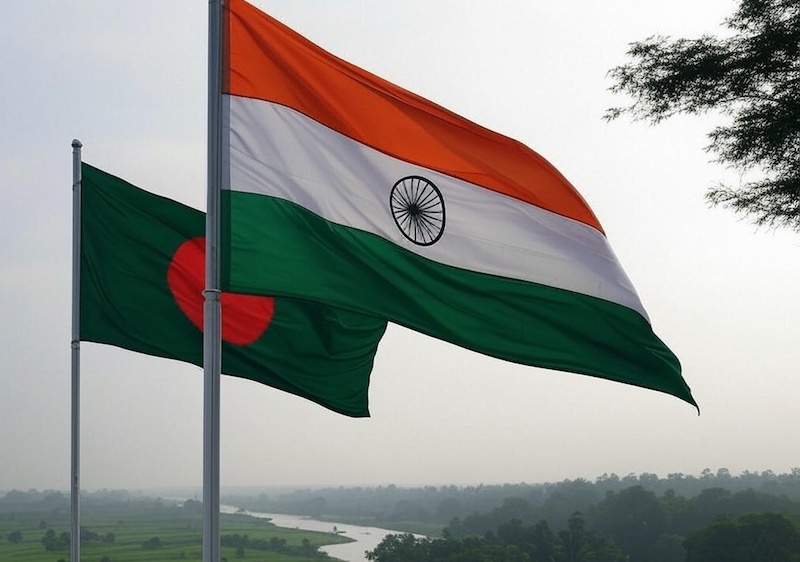 Indian and Bangladeshi troops at Tripura’s Agartala-Akhaura border during a joint commemoration of the 53rd anniversary of Vijay Diwas. (Photo: MEA)
Indian and Bangladeshi troops at Tripura’s Agartala-Akhaura border during a joint commemoration of the 53rd anniversary of Vijay Diwas. (Photo: MEA)
India’s northeastern states – Assam, Meghalaya, Tripura, and Mizoram – share 1,880 kilometres of land border with Bangladesh. This border geopolitically intertwines the “Seven Sisters” and Bangladesh. While this intertwining necessitates stronger sovereign relations in the political, economic, security, and cultural spheres, India-Bangladesh relations are strained due to the cynical attitude of the interim Bangladesh administration.
Relations between India and Bangladesh have become abnormal following the removal of the prime minister, Sheikh Hasina, from power and her subsequent arrival in India on August 5, 2024. Since then, Bangladesh has been persistently demanding the deportation of Sheikh Hasina, a trusted friend who was instrumental in stabilizing the northeast region. She also played a vital role in safeguarding the Siliguri Corridor, the crucial land link connecting northeast India with the rest of the country.
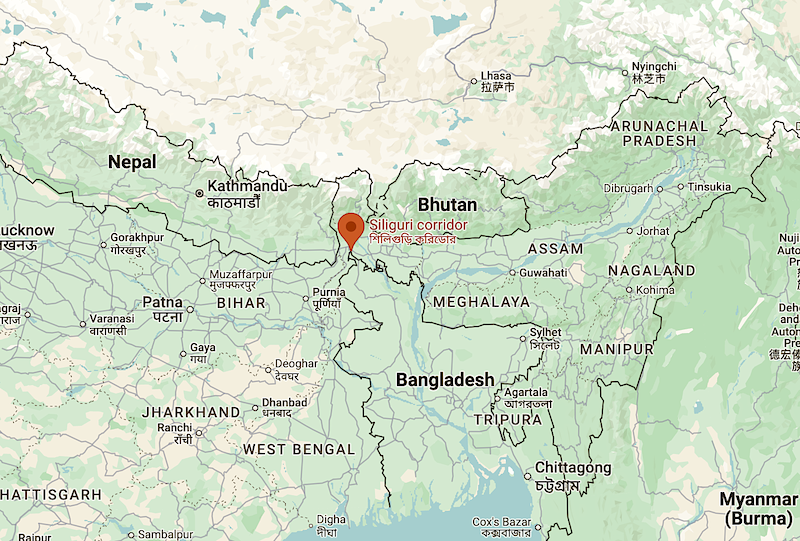 The Siliguri Corridor. (Google Maps)
The Siliguri Corridor. (Google Maps)
This corridor now faces the threat of Pakistan military’s Inter-Services Intelligence (ISI) interference. India’s acquiescence to Bangladesh’s demand to hand over Hasina would compromise its standing as a nation aspiring to be a regional power in South Asia.
Read also: Will recent Bangladesh-China pact pose new challenge to Siliguri Corridor?
To put the situation into perspective, relations between India and Bangladesh are likely to remain in a state of uncertainty. The current establishment in Bangladesh is anti-India, and it is probable that any future popular government will also harbour anti-India sentiments. Therefore, India must enhance its military preparedness to secure its borders with Bangladesh against a potential three-pronged threat, with Pakistan and China backing Bangladesh.
The recent remarks by Muhammad Yunus, Bangladesh’s chief advisor, during a visit to China was not an off-the-cuff roll of the tongue but a deliberate strategy to exploit India’s sensitivities regarding the northeast, incite anti-Indian elements to align with Bangladesh, and destabilize the northeast and the Siliguri Corridor. Yunus’s statement openly encouraged the geographical leveraging of the northeastern states and the Siliguri Corridor, with support from China and Pakistan. The fact that this statement was made on Chinese soil suggests tacit Chinese endorsement.
The primary tactics of the current Bangladesh regime is to exploit the prevailing anti-Sheikh Hasina sentiment within Bangladeshi society, portraying India as an oblivious “big brother” eager to see her submit to the rule of law, and as the main obstacle to this. This approach has transformed the relationship from one of a friendly ally to that of an adversarial neighbour. Bangladesh’s tacit approval of the free rein given to Pakistan’s ISI, and the ISI’s influence in the radicalization of universities and its camaraderie with the Bangladesh Army and establishment, bode ill for India’s borders. India must heed these early warning signals to bolster border management and defence, and avoid being caught unprepared, which would jeopardize peace and stability in the northeast.
Read also: Bangladesh’s descent into chaos is a looming threat to India’s eastern frontier
While in China, Yunus stated that the northeast is landlocked and lacks access to the ocean. He argued that Bangladesh is the sole gateway to the ocean for the region, presenting significant opportunities for Bangladesh and the Chinese economy, and proposed extending Chinese economic influence into the northeast. In an attempt to attract Chinese investment to salvage Bangladesh’s struggling economy, Yunus intentionally provoked India by commenting on the northeast region, thus violating India’s inviolable sovereignty.
India rightly and promptly countered his inappropriate comments. The foreign minister, S Jaishankar, asserted that cooperation should be viewed holistically and not selectively. India also terminated the transhipment facility for Bangladesh’s export cargo with Bhutan, Nepal, and Myanmar.
The security and political situation in the northeast is complex. Manipur is experiencing unrest, while Mizoram and Nagaland are opposed to the fencing project along the India-Myanmar border and any alteration to the free movement regime. The Barak valley has witnessed a significant influx of Bangladeshis in the past. In border areas, communities are intertwined by shared ethnicity, yet divided by borders, impacting regional politics and security. Deep geopolitical fault lines exist in the northeast, driven by political, economic, ethnic, and cultural factors. These fault lines are indicative of the precarious situation in the northeast and must be addressed. If left unaddressed, these divisions will be exploited by Bangladesh, with moral and material support from China and Pakistan.
Read also: Bangladesh’s shifting posture has strategic implications for regional stability
Recently, an audio recording surfaced, purportedly implicating the former chief minister, N Biren Singh, in the Manipur violence. The matter is currently before the Supreme Court, and this incident clearly pits one community against another, exacerbating demographic and geographical fault lines. Newspapers also reported a statement by Singh, in which he shared a video of the late PA Sangma’s parliamentary speech advocating for the creation of smaller states in the region, such as Gorkhaland, Kamtapur, Bodoland, Karbi Anglong, Garoland, Dimasa, and Kukiland. Singh attributed the violence in Manipur to such statements. In response, Conrad Sangma, the chief minister of Meghalaya and son of PA Sangma, criticized the dragging of the late Sangma’s name into the conflict, emphasising that he always stood for the people of the northeast.
Such political infighting provides an opportunity for anti-India elements to exploit the instability. Political leaders must find ways to bridge these fault lines to ensure peace and development in the northeast. Now, considering the growing presence of the ISI and Chinese influence, what measures should India take to address and manage Bangladesh?
India must conduct an in-depth analysis of Bangladesh’s belligerence and its implications for security in the northeast and the Siliguri Corridor.
Firstly, a thorough security review of the Bangladesh border and the Siliguri Corridor is essential, considering both conventional and unconventional threats. This review should assess India’s preparedness to address these challenges through coordinated border management, internal security measures, and conventional threat management. This analysis must integrate the common threat posed by Bangladesh, Pakistan, and China. India must be ready and equipped to counter this threat.
Read also: Bangladesh crisis – India’s security challenges, strategy to tackle them
Secondly, effective border management is crucial. The entire 4,096-kilometre India-Bangladesh border is highly active, with populations residing close to the “zero line”, including villages beyond the fencing and in the char lands. Consequently, the risk of illegal immigration and infiltration remains high despite the fencing, due to its porosity. The probability of illegal migration is further exacerbated by safety concerns among minorities in Bangladesh. Therefore, strengthening border management along the Bangladesh border is imperative.
Thirdly, diplomatic engagement is necessary to improve relations with Bangladesh and steer it away from Pakistan and China by addressing its primary concerns. India must endeavour to sign an agreement with Bangladesh for the management and sharing of the Teesta river waters, a significant source of tension in the relationship. Frustrated by India’s inability to resolve the Teesta issue, Muhammad Yunus, during his recent visit to China, welcomed Chinese involvement in the Teesta River Comprehensive Management and Restoration Project. India’s failure to address this issue has driven Bangladesh into China’s embrace. Chinese involvement in the Teesta project would position China precariously close to India’s borders.
The intertwined geopolitics of India and Bangladesh cannot be denied. Improved relations with Bangladesh would ensure peace and stability in the Northeast, facilitate better land transit arrangements connecting northeast India with the mainland through Bangladesh, stabilise the Siliguri Corridor, safeguard the security of minorities in Bangladesh, and curb illegal immigration and infiltration through enhanced coordination between the border guarding forces of both nations.
Read also: India must consolidate its western front to tame Pakistan
India must also address the existing fault lines within the northeast and work diligently to resolve them, as an unstable northeast provides an opportunity for neighbouring countries to interfere. While actively pursuing improved relations with Bangladesh, India must simultaneously strengthen its border management and conventional defence capabilities, recognising that Bangladesh may not act alone in any future conflict and could have active support from its allies. Therefore, India must be prepared for a potential three-front challenge in the region.
Disclaimer: The views expressed in the article are the author’s own and don’t necessarily reflect the views of India Sentinels.
Follow us on social media for quick updates, new photos, videos, and more.
X: https://x.com/indiasentinels
Facebook: https://facebook.com/indiasentinels
Instagram: https://instagram.com/indiasentinels
YouTube: https://youtube.com/indiasentinels
© India Sentinels 2025-26

